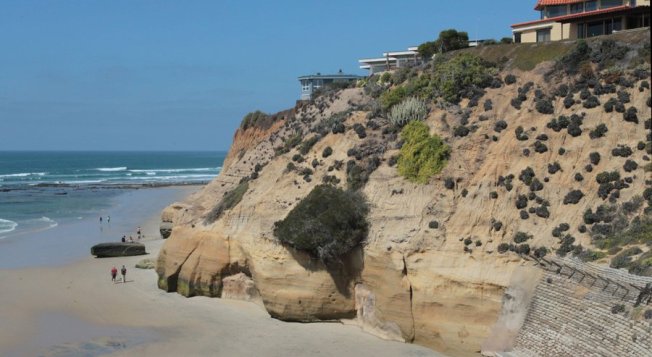This whale washed up dead on Alaska’s St. George Island in June 2014. Scientists say it is a newly discovered species of beaked whale.
Photograph by Karin Holser
Like many good mysteries, this one started with a corpse, but the body in question was 24 feet (7.3 meters) long.
The remains floated ashore in June of 2014, in the Pribilof Islands community of St. George, a tiny oasis of rock and grass in the middle of Alaska’s Bering Sea. A young biology teacher spotted the carcass half-buried in sand on a desolate windswept beach. He alerted a former fur seal researcher who presumed, at first, that she knew what they’d found: a Baird’s beaked whale, a large, gray, deep-diving creature that occasionally washes in dead with the tide.
But a closer examination later showed that the flesh was too dark, the dorsal fin too big and floppy. The animal was too short to be an adult, but its teeth were worn and yellowed with age.
__________________________________________________
It’s just so exciting to think that in 2016 we’re still discovering things in our world—even mammals that are more than 20 feet long.
It turns out, according to new research published Tuesday, that this was not a Baird’s beaked whale at all, but an entirely new species—a smaller, odd-shaped black cetacean that Japanese fishermen have long called karasu, or raven.
“We don’t know how many there are, where they’re typically found, anything,” says Phillip Morin, a molecular geneticist at the National Oceanic and Atmospheric Administration’s Southwest Fisheries Science Center. “But we’re going to start looking.”
It’s rare to uncover a new species of whale. Advances in DNA research have helped scientists identify five new cetaceans in the past 15 years but two were dolphins and most were simple category splits between fairly similar species. This animal, in the genus Berardius, looks far different than its nearest relative and inhabits an area of the North Pacific where marine mammal research has been conducted for decades … read more –> http://news.nationalgeographic.com/2016/07/new-whale-species/…










 Throwing spare change into a fountain is a time-honored ritual: throw a penny into the water, and your wish might come true. But all that money has to go somewhere. Otherwise, the growing piles of pennies, nickels, quarters and Euros could clog up the fountain’s works.
Throwing spare change into a fountain is a time-honored ritual: throw a penny into the water, and your wish might come true. But all that money has to go somewhere. Otherwise, the growing piles of pennies, nickels, quarters and Euros could clog up the fountain’s works.












 How likely are you to pick up a book on the subway, in line at the bank or before you head to bed? If you live in Seattle, Portland, or Washington, D.C., the answer may be “very likely.” Those were the top-three cities
How likely are you to pick up a book on the subway, in line at the bank or before you head to bed? If you live in Seattle, Portland, or Washington, D.C., the answer may be “very likely.” Those were the top-three cities